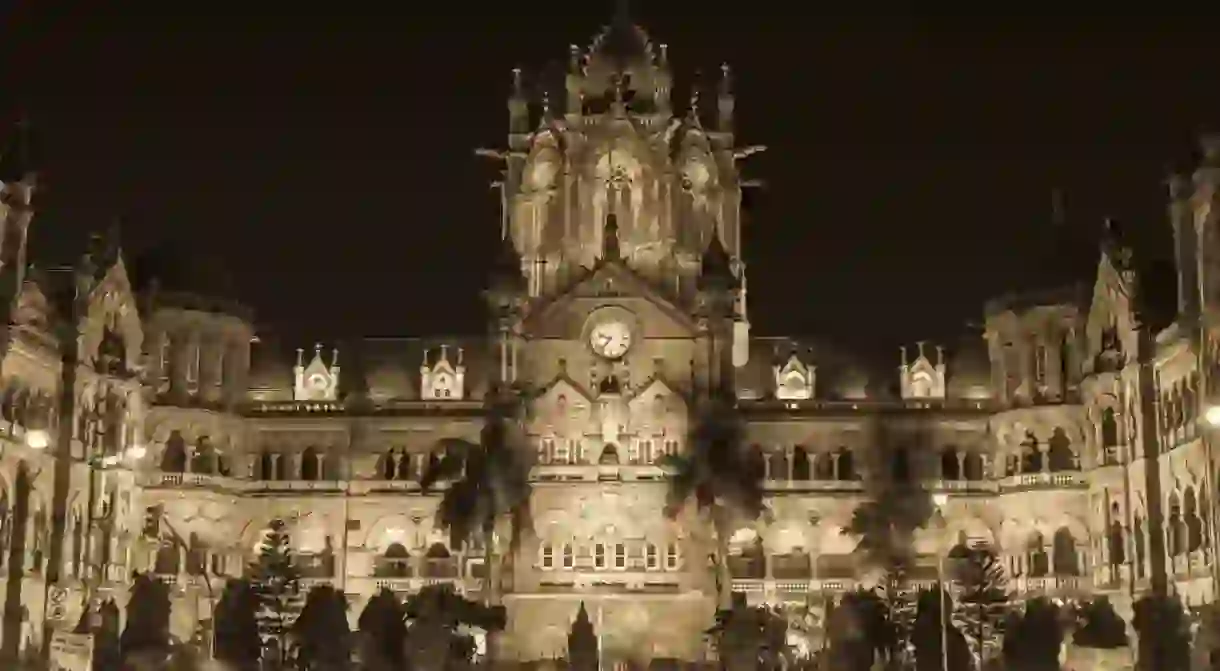Mumbai Architecture In Iconic Buildings

Mumbai has a complex, layered and uniquely cosmopolitan history. And this is best reflected by its diverse architectural offerings, combining the best of many worlds and eras – from High Victorian to Indo-Islamic. We have compiled a list of ten iconic buildings, the aesthetics and history of whose architecture best represents the unique offerings of Mumbai.
Chhatrapati Shivaji Terminus
Mumbai’s most iconic landmark, the Chhatrapati Shivaji Terminus, is as functional, relevant and central to life in the city today as it could be almost 130 years after its opening. It is not just the most famous railway station in India, but also a UNESCO World Heritage site. The grand structure is a striking example of Victorian Gothic Revival and Indian architectural styles – featuring turrets, pointed arches and a high central dome, with a gigantic female figure holding a torch pointing upwards in her right hand and a spoked wheel in the other. While an architectural marvel to gaze in adoration at for tourists, the magnificent building is just part of the daily commute for hundreds of thousands of busy Mumbaikars.

Haji Ali Dargah
This traditional Indo-Islamic-style architectural wonder – featuring stunning white domes and minarets – dates to 1431, serving as a reminder of the glorious and complex history of this city and country. The prominent mosque and dargah (tomb) is located on an isle about 500 meters off the coast of Mahalakshmi, connected to the mainland by a narrow pathway which only appears during low-tide.
Mumbai High Court
The present-day High Court of Mumbai building was built in the 1870s in early English-Gothic style, as designed by Colonel J.A. Fuller, R.E. With blue-basalt used as facing over walls made of rubble and chunam, this colonial British-style building features various architectural details that continue to amaze visitors. It houses two life-size statues – a stone statue of the Goddess of Justice holding the Sword of Justice in one hand, and scales in the other, and a statue of the Goddess of Mercy with her hands folded.
Gateway Of India
The Gateway Of India, Mumbai’s most defining monument, was constructed to commemorate the visit of King George V and Queen Mary to the city. Signifying its association with the British Raj era in Mumbai, it is also the spot from where the last of British troops departed the country after its independence. This Indo-Saracenic architectural spectacle was designed by Scottish architect George Wittet, taking from Indo-Islamic, Indian and Roman influences. Built from yellow basalt and reinforced concrete, the building was completed only in 1924 while its foundation stone was laid in 1911.
Mount Mary’s Basilica
Mount Mary’s Basilica sits atop a hillock overlooking the Arabian Sea, near the Taj Lands End in Bandra. The historic church has graced this part of Bandra for nearly half a century – the first edifice at the hillock is considered to have been built around 1570, with it having been rebuilt in 1640 and then again in 1761. While the current church structure is only just over a hundred years old – designed by architect Shapoorjee Chandabhoy in 1904 – the statue of Mother Mary at the church is said to have been brought to India by the Portuguese in the 16th century.
The Taj Mahal Palace
The Taj’s famous dome was the first clear marker of the Bombay harbor until the Gateway of India was built next to it about 20 years later. This iconic Arabian Sea-facing hotel was built in 1903 under Jamsetji Tata, and designed by architect Sitaram Khanderao Vaidya. It takes inspiration from around the world, showcasing striking Victorian Gothic, Romanesque and Edwardian elements. A century later, the luxurious and historically significant hotel remains unsurpassed among others in India.
Knesset Eliyahoo Synagogue
One of the oldest synagogues in the city, the Knesset Eliyahoo Orthodox Jewish synagogue was established in 1884. This historic building stands out from others in Kala Ghoda primarily due to its sky-blue color and Victorian stained glass. The synagogue was built under Jacob Elias Sassoon, the grandson of David Sassoon who was a leader of the Jewish community in Bombay after emigrating from Baghdad while fleeing persecution. It was designed by British architectural firm Gostling & Morris.
World Trade Centre
As much as there are iconic buildings representing Bombay history, there are an increasing number of contemporary landmark buildings springing up in the financial hub of Mumbai. The Mumbai World Trade Centre, built in 1970, comprises of two towers – the MRVDC and the IDBI – of which the former is one of South Asia’s tallest buildings. The iconic towers were built by the Shapoorji Pallonji Group – a business conglomerate who also built other south Mumbai landmarks, including the Reserve Bank of India and Bombay Stock Exchange buildings. The center is the most iconic landmark in the upscale Cuffe Parade neighborhood, north of Colaba.
Phiroze Jeejeebhoy Towers
The Phiroze Jeejeebhoy Towers, built in 1980, were originally called the Bombay Stock Exchange (BSE) Towers since it is owned and operated by the BSE. The building was renamed following the death of Sir Phiroze Jamshedji Jeejeebhoy, the chairman of the BSE at the time. The iconic 29-storey building in Mumbai’s historic Fort neighborhood is recognized throughout Asia and the world primarily for housing the BSE, which is Asia’s first stock exchange as well as the world’s fastest stock exchange. However, for Mumbaikars, the landmark building serves as a reminder of the financial significance embodied by the city, and particularly South Mumbai.

Did you know – Culture Trip now does bookable, small-group trips? Pick from authentic, immersive Epic Trips, compact and action-packed Mini Trips and sparkling, expansive Sailing Trips.













